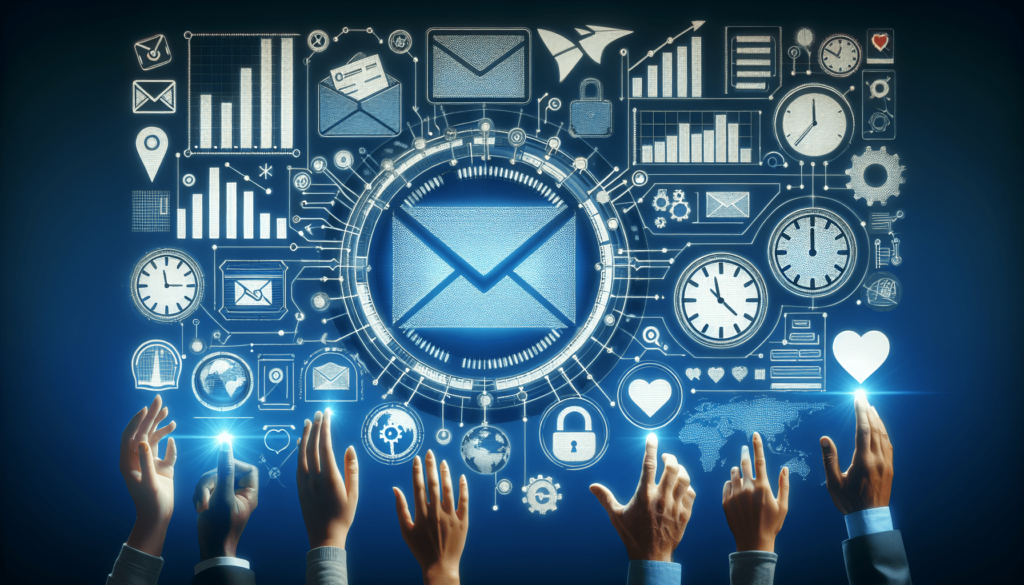In today’s digital age, building and maintaining strong customer relationships is crucial for the success of any business. So, how can you ensure that customers keep coming back to your brand? One highly effective strategy is through email marketing. By utilizing the power of personalized and strategic email campaigns, you can communicate directly with your customers, build brand loyalty, and ultimately improve customer retention. In this article, we will explore the various ways in which you can leverage email marketing to strengthen your relationship with customers and keep them engaged with your brand. Email marketing is a powerful tool that can significantly contribute to improving customer retention. By implementing segmentation and personalization, targeted campaigns, automated email flows, loyalty programs and exclusive offers, customer feedback and surveys, re-engagement campaigns, content upgrades and resources, social proof and testimonials, personalized recommendations, and A/B testing and analytics, you can effectively engage and nurture your customers, ultimately retaining their loyalty. Let’s explore each of these strategies in detail.
Segmentation and Personalization
Segmenting your customers helps you categorize them into distinct groups based on their demographics, behaviors, preferences, or purchasing history. This segmentation allows you to personalize your email content, creating a more meaningful connection with your customers.
By understanding your customers’ interests, needs, and preferences, you can tailor your email messages to resonate with them on a more personal level. Addressing your customers by their first name, sending them relevant offers, and providing content that aligns with their interests increases the chances of engagement and customer retention.
Targeted Campaigns
Identifying your target audience is vital for creating effective and focused email campaigns. By understanding who your ideal customers are, their characteristics, preferences, and pain points, you can tailor your campaigns to specific segments.
Creating relevant offers and incentives that align with each segment’s needs and desires increases the likelihood of conversion and customer loyalty. By presenting your audience with targeted campaigns, you demonstrate that you understand their unique requirements and can provide solutions that address them.

Automated Email Flows
Automated email flows save you time and effort while delivering relevant content to your customers at the right time. Welcome emails are a great way to make a strong first impression and set the tone for future interactions. These emails can include a warm welcome message, links to helpful resources, and even exclusive offers to incentivize immediate engagement.
Abandoned cart emails can remind customers about the products they left behind, offering them an incentive to complete their purchase. This gentle nudge can often lead to conversions and re-engagement. Post-purchase emails show appreciation to customers, providing them with order details and asking for feedback. These emails build trust and encourage customers to become repeat buyers.
Loyalty Programs and Exclusive Offers
Rewarding loyal customers is an effective way to encourage customer retention and foster brand loyalty. By implementing a loyalty program, you can offer exclusive discounts, early access to new products, or special perks to those who consistently engage with your brand.
Loyalty programs provide customers with an incentive to continue purchasing from your business, creating a sense of exclusivity and fostering long-term relationships. Personalized incentives, such as a birthday discount or a personalized thank-you note, make customers feel valued and appreciated, further strengthening their loyalty.

Customer Feedback and Surveys
Collecting feedback through email allows you to gather valuable insights and understand your customers’ experiences and satisfaction levels. By sending well-designed surveys to your customers, you can gain a deeper understanding of their needs, expectations, and pain points.
Analyzing survey responses helps you identify areas for improvement and implement necessary changes based on customer feedback. This demonstrates to your customers that you value their opinions and are committed to providing an exceptional experience, ultimately increasing customer satisfaction and retention.
Re-engagement Campaigns
Identifying inactive customers and implementing re-engagement campaigns is crucial for customer retention. By segmenting your inactive customers, you can send targeted emails that are specifically designed to re-ignite their interest in your brand.
Offering incentives, such as exclusive discounts or free shipping, can entice inactive customers to make a purchase or engage with your brand once again. These campaigns show customers that you miss their presence and value their continued support, fostering re-engagement and customer retention.
Content Upgrades and Resources
Providing valuable content to your customers is a powerful way to build trust, establish thought leadership, and cultivate customer loyalty. By creating informative blog posts, articles, or videos that cater to your customers’ interests and pain points, you position yourself as a valuable resource.
Offering free resources, such as e-books, whitepapers, or templates, enhances the value you provide to your customers. Moreover, within this content, you can strategically incorporate upselling or cross-selling opportunities to showcase related products or services, further increasing engagement and customer retention.
Social Proof and Testimonials
Including customer reviews and testimonials in your emails serves as social proof, building trust and credibility. Highlighting success stories and positive experiences shared by your customers demonstrates to new and existing customers that your products or services deliver on their promises.
Positive reviews and testimonials act as endorsements, easing any hesitations potential customers may have and convincing them to choose your brand. Trust and credibility are key factors in customer retention, as customers are more likely to remain loyal to a brand they perceive as reliable and trustworthy.
Personalized Recommendations
Utilizing customer data for personalized recommendations is an excellent way to enhance relevance and engagement. By leveraging data on customers’ previous purchases, browsing history, or preferences, you can suggest products or services that align with their interests and needs.
Including personalized product recommendations in your emails creates a sense of connection and showcases how well you understand your customers’ unique preferences. This relevance increases the chances of conversions and encourages customers to continue engaging with your brand.
A/B Testing and Analytics
Conducting A/B testing for your email campaigns is crucial for optimizing your strategies and maximizing results. By testing different elements, such as subject lines, email designs, or call-to-action buttons, you can determine which variations yield the highest open and click-through rates.
Analyzing performance metrics, such as open rates, click-through rates, and conversion rates, provides valuable insights into the effectiveness of your email marketing efforts. Armed with this data, you can make informed decisions and optimize your email campaigns to better resonate with your audience, increasing customer retention.
In conclusion, utilizing email marketing strategies to improve customer retention requires a comprehensive approach. By implementing segmentation and personalization, targeted campaigns, automated email flows, loyalty programs and exclusive offers, customer feedback and surveys, re-engagement campaigns, content upgrades and resources, social proof and testimonials, personalized recommendations, and A/B testing and analytics, you can effectively engage and retain your customers for the long term. Remember, building strong relationships with your customers is key to their loyalty and advocacy, and email marketing provides the perfect platform to nurture those relationships.

